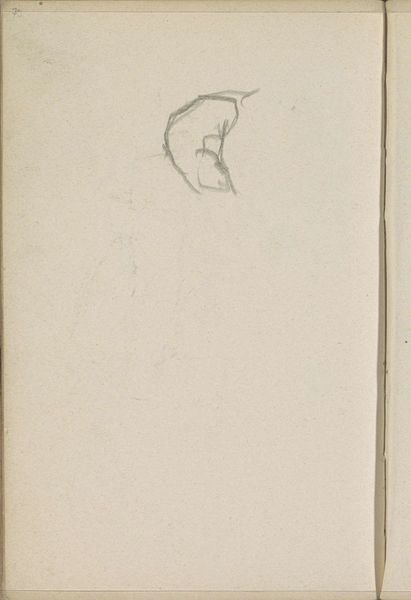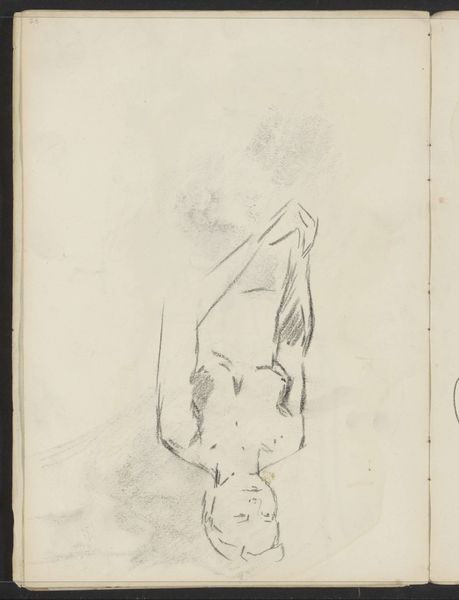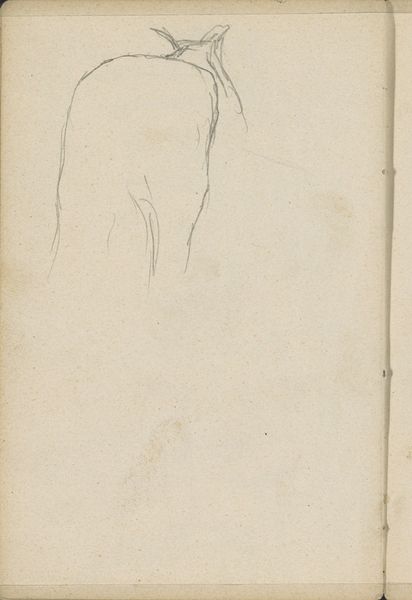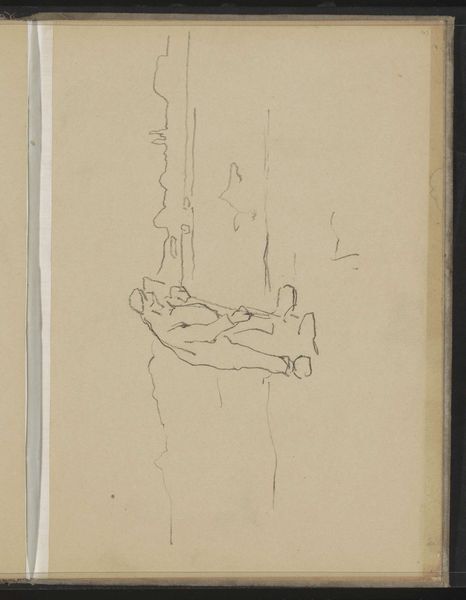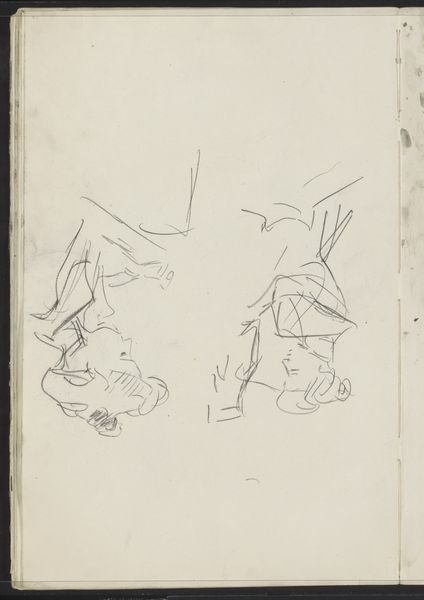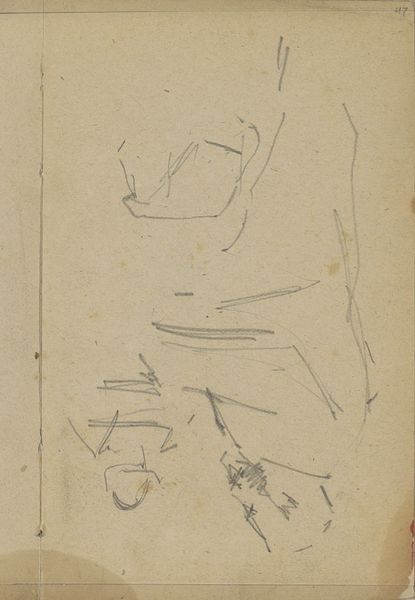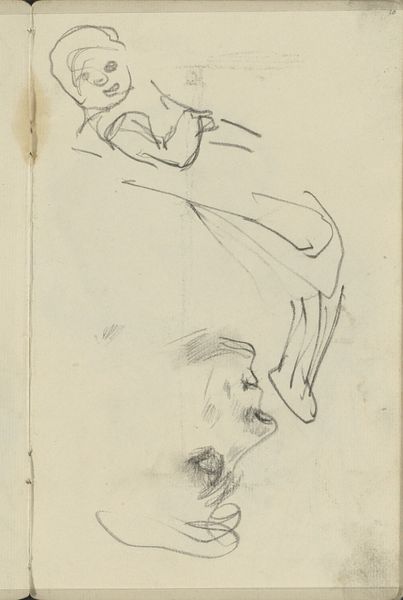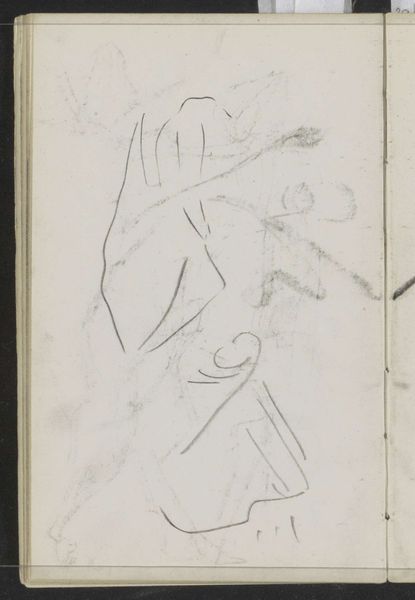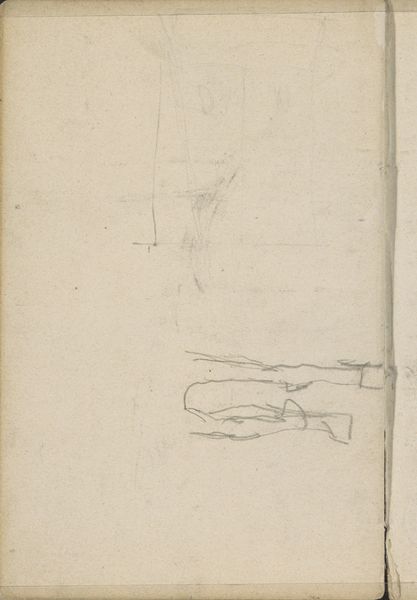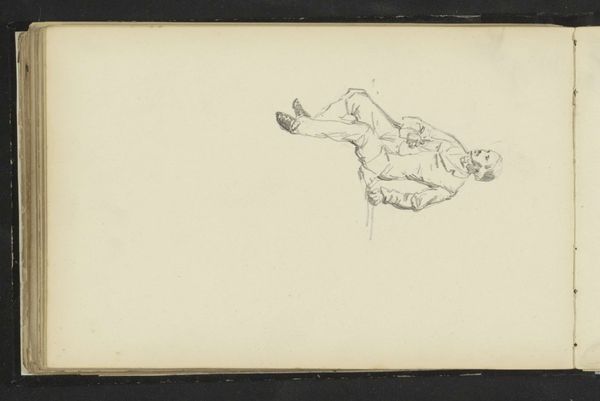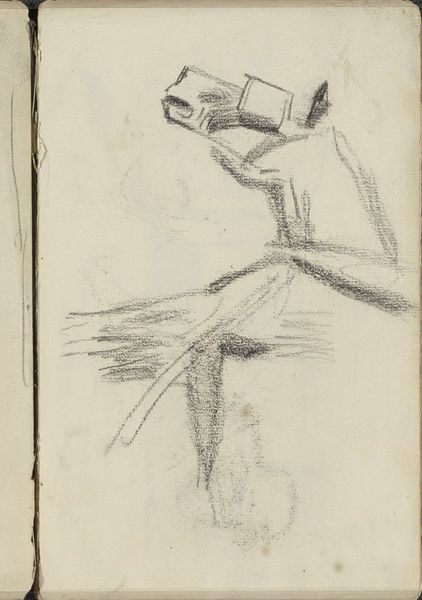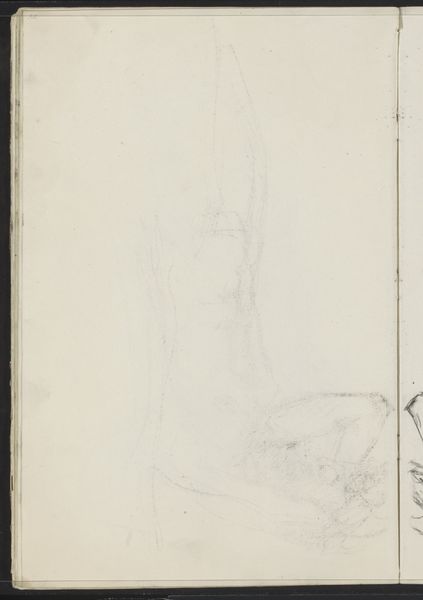
Copyright: Rijks Museum: Open Domain
Curator: Jozef Israëls created this pencil drawing, aptly titled "Armen, waarvan één arm leunend op een balk"—or, "Arms, one arm resting on a beam"—sometime between 1834 and 1911. It’s currently held at the Rijksmuseum. Editor: There’s an immediacy to this work. It feels less like a study and more like a passing thought captured in graphite. The light pencil work gives it a sort of ephemeral quality. Curator: Considering Israëls’ focus on the lives of working-class people, these arms might represent laborers or members of the rural poor. Note how the figure's leaning posture seems indicative of exhaustion, or perhaps a moment of quiet contemplation in an arduous life. Editor: I’m drawn to the contrast between the finished and unfinished areas. Look at the detailing on the fingers, especially on the hand resting on what seems to be a ledge—and then, the almost ghostlike rendering of the other arm. Curator: The unfinished quality invites the viewer to complete the narrative themselves, which, in my opinion, makes this sketch very relatable. Perhaps we can all recognize the weight of daily existence. It really pushes against romanticism toward a starker portrayal of labor. Editor: Absolutely. I’m also wondering about the beam. It's minimally suggested, right? Is it a structural element or something more symbolic, like a barrier or obstacle? The composition emphasizes the isolation of the arm. Curator: Or it could symbolize societal burdens; consider that throughout much of history arms have been used in ways that reflect class divides and unequal opportunities. The simple act of resting becomes a powerful statement. Editor: True, but also, on a purely compositional level, the varying pressure of the pencil creates depth and a compelling visual rhythm, regardless of the social commentary that could also be explored. Curator: For me, this piece embodies both the constraints and the resilience found in everyday life. It serves as a quiet testament to untold stories. Editor: Indeed, and the very act of sketching, of capturing these forms, can be seen as a means of discovering those inherent stories contained within.
Comments
No comments
Be the first to comment and join the conversation on the ultimate creative platform.
